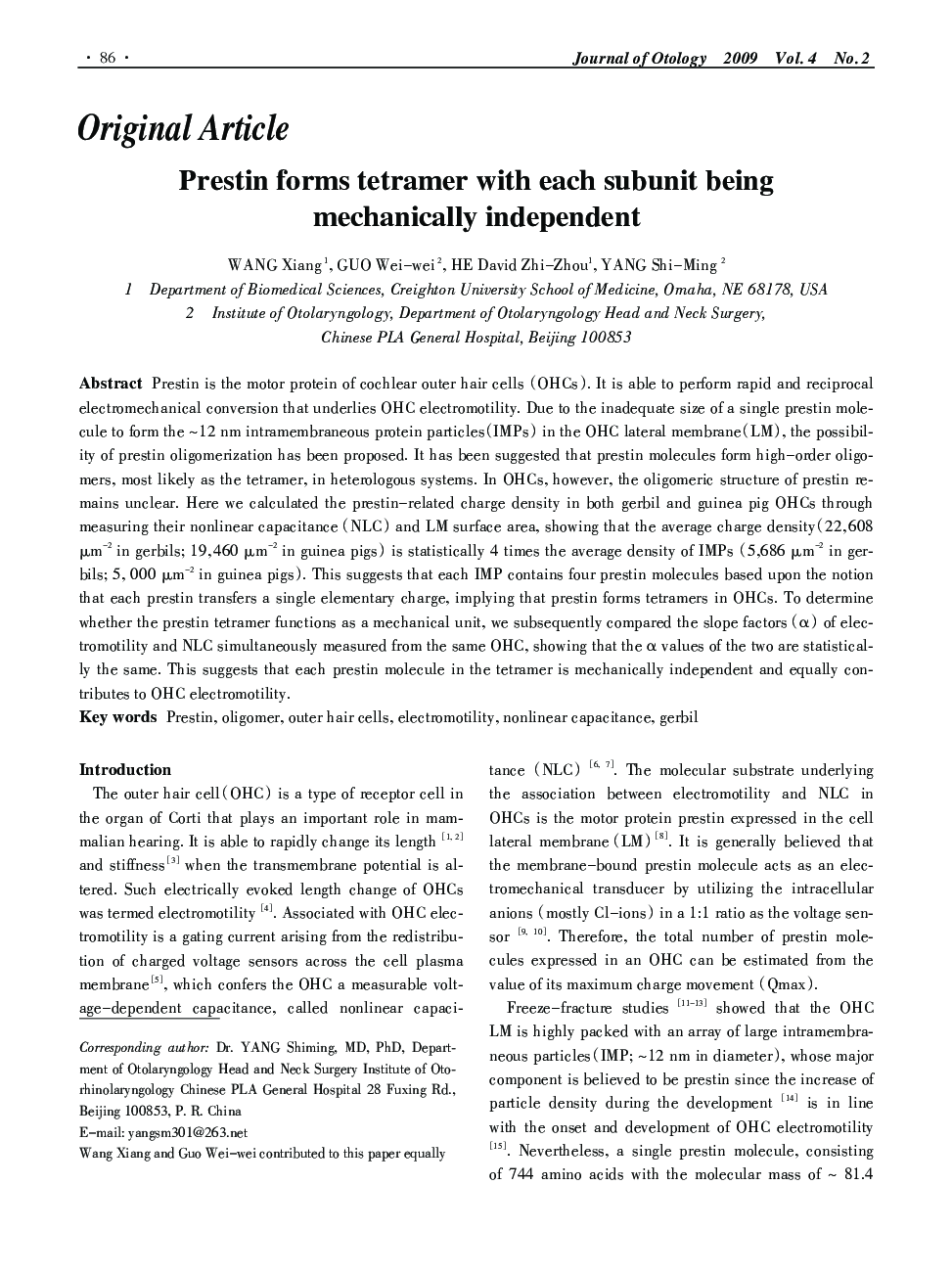| Article ID | Journal | Published Year | Pages | File Type |
|---|---|---|---|---|
| 4116772 | Journal of Otology | 2009 | 12 Pages |
Abstract
Prestin is the motor protein of cochlear outer hair cells (OHCs). It is able to perform rapid and reciprocal electromechanical conversion that underlies OHC electromotility. Due to the inadequate size of a single prestin molecule to form the ~ 12 nm intramembraneous protein particles (IMPs) in the OHC lateral membrane (LM), the possibility of prestin oligomerization has been proposed. It has been suggested that prestin molecules form high-order oligomers, most likely as the tetramer, in heterologous systems. In OHCs, however, the oligomeric structure of prestin remains unclear. Here we calculated the prestin-related charge density in both gerbil and guinea pig OHCs through measuring their nonlinear capacitance (NLC) and LM surface area, showing that the average charge density (22, 608 μM- 2 in gerbils; 19, 460 μM- 2 in guinea pigs) is statistically 4 times the average density of IMPs (5, 686 μM- 2 in ger-bils; 5, 000 μM- 2 in guinea pigs). This suggests that each IMP contains four prestin molecules based upon the notion that each prestin transfers a single elementary charge, implying that prestin forms tetramers in OHCs. To determine whether the prestin tetramer functions as a mechanical unit, we subsequently compared the slope factors (α) of electromotility and NLC simultaneously measured from the same OHC, showing that the a values of the two are statistically the same. This suggests that each prestin molecule in the tetramer is mechanically independent and equally contributes to OHC electromotility.
Related Topics
Life Sciences
Neuroscience
Cellular and Molecular Neuroscience
Authors
Wang Xiang, Guo Wei-wei, He David Zhi-Zhou, Yang Shi-Ming,
